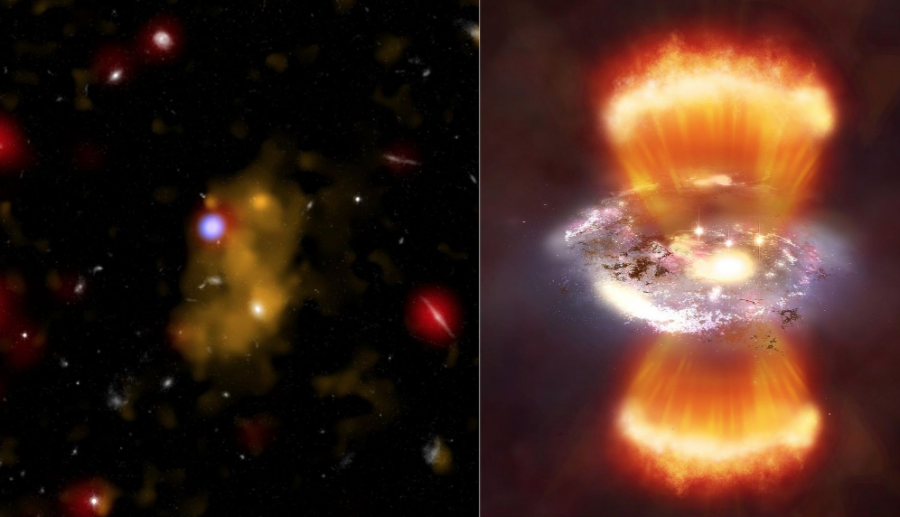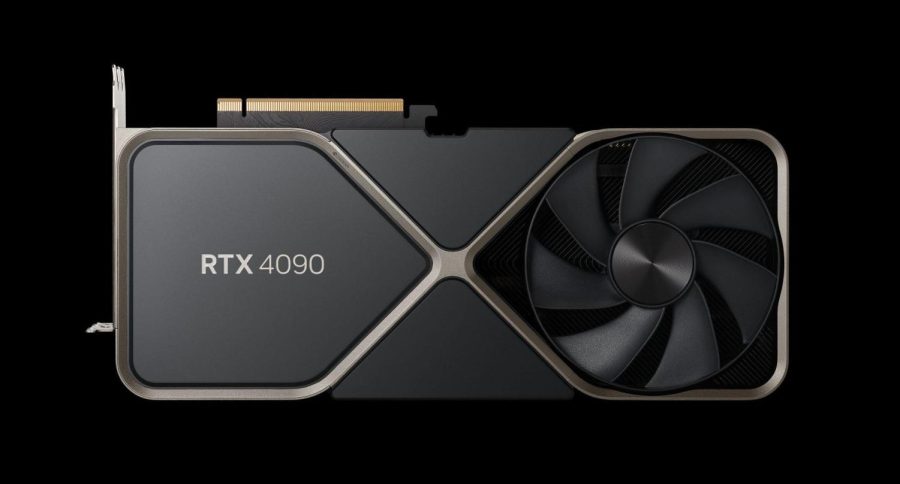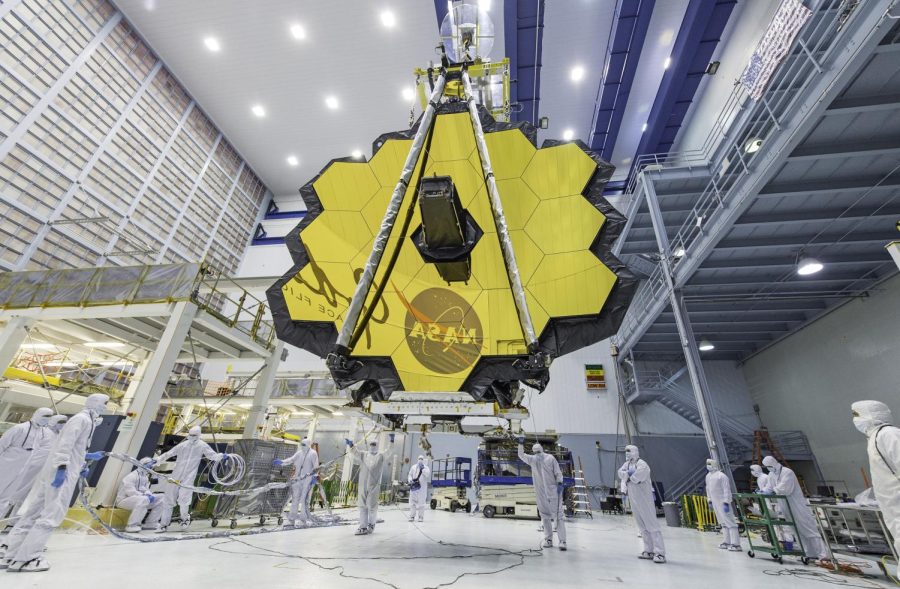Located 12.9 billion light-years away from Earth, Himiko, a giant gas cloud located in the constellation of Cetus, is considered to be one of the largest and most distant objects found in space.
The cloud, spanning 55,000 light years across (approximately half the diameter of the Milky Way) and holding roughly the equivalent of 40 billion Suns, predates similar blobs, known as Lyman-alpha blobs. However, Lyman-alpha blobs remain a mystery to scientists since peering so far back into the history of the Universe is hard to do with the telescopes scientists have.
Nevertheless, what makes Himiko so unique is that the nebular gas cloud is thought to be a protogalaxy (a cloud of gas that is forming into a galaxy) in the middle of formation.
Ordinarily, intense star formation during the formation of galaxies (like Himiko), creates dust clouds that are composed of heavier elements such as carbon, oxygen, and silicon. However, when Atacama Large Millimeter/submillimeter Array (ALMA), observed Himiko, no such elements were found in Himiko. The spectral signature associated with the emission of gaseous carbon, a common characteristic of intense star formation, was also missing.
These non-detections of heavier elements and carbon perplexed scientists since Himiko does not contain dust clouds that are found in energetic galaxies. Instead, Himiko is made merely of hydrogen and helium- materials formed in the Big Bang itself.









